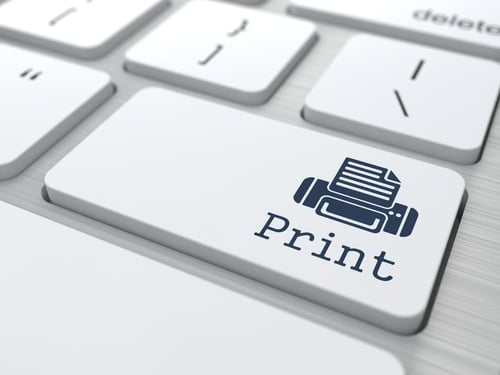Patenting in 3D printing is growing strongly, especially in medical and consumer product industries. This is because of the expiration of key 3D printing patents and because 3D printing enables functionalities which were previously impossible.
Patenting in 3D printing surged in 2014
Patenting in 3D printing has experienced a growth spurt in 2014, as evidenced by the number of published U.S. patent applications and granted U.S. patents in the field (data: https://3dprint.com/181207/3d-printing-patent-landscape/).
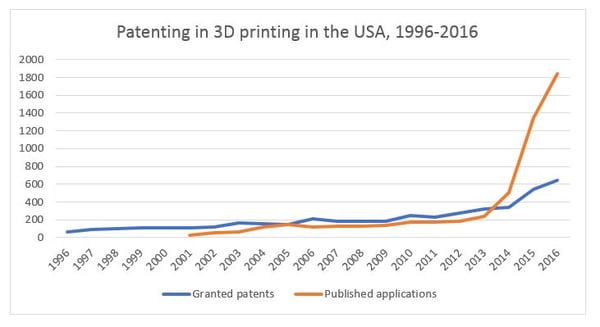
Patent applications are usually published after 18 months from filing, and the time from filing to grant in the USA is, on average, around 2 years. Therefore, the number of published patent applications anticipates the number of granted patents to follow.
Applied focus
Perhaps counter-intuitively, patenting in 3D printing – both with respect to granted patents and published patent applications – nowadays occurs mostly in in industries which use 3D printing instead of in the core 3D printing technology itself. The following figures illustrate this in the USA in 2010-2016.
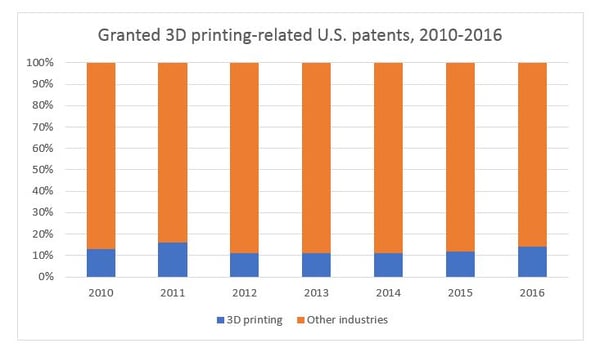
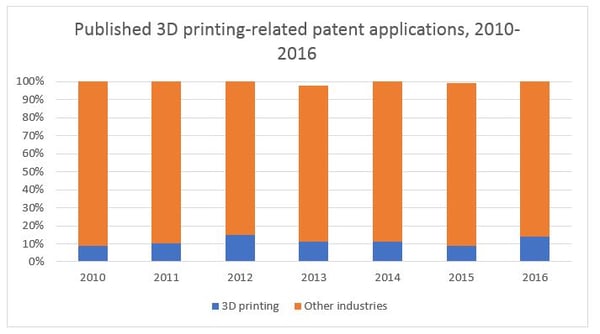
One reason for the growth in 3D printing-related patenting is widely taken to be the expiration of some pivotal patents in 3D printing technology granted in 1980s and 1990s.
Such expired key patents include, for example, US5597589 in laser sintering (University of Texas; expired in 2014), and US5121329 in extrusion (Stratasys, expired in 2009).
The expiration of these and other such central patents has released the use of previously patent-protected technologies for use in various applied contexts – which now manifests itself in strong growth in 3D printing-related patenting, especially from 2014 onwards.
But which are the industries in which 3D printing-related patenting is currently most prominent?
Medical industries lead the way
In the light of U.S. patent statistics, medical industries seem to be the most prominent context for 3D printing-related patenting:
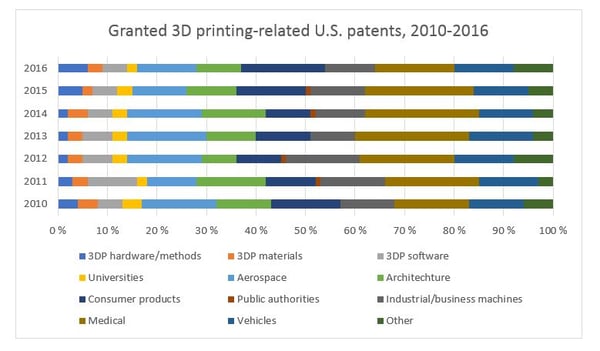
Medical uses are closely followed by aerospace (e.g. 3D printed jet engine parts), vehicles (e.g. 3D printed truck parts) and consumer products (e.g. various 3D printed toys – and also applications such as Disney’s anti-scanning and -printing technology for preventing the reproduction of trademark- and design-protected toys).
3D printing enables new patentable solutions
With 3D printing, it is possible to bring about such new and inventive solutions which simply have not been possible with other, more conventional manufacturing technologies and methods. In this view, it is only to be expected that the focus in 3D printing-related patenting is in applied contexts instead of the technology itself.
For example, recently I prepared a patent application for a Finnish client, wherein the functionality and structural construction of the product is not possible to bring about in any other way than by 3D printing. In this case, the inventiveness of the solution appears, at face value, quite apparent, because evidently 3D printing has not been utilized in this context before. Thus, 3D printing enables previously unseen structural and functional possibilities such as manufacturing in a powder bed moving parts inside other moving parts.


